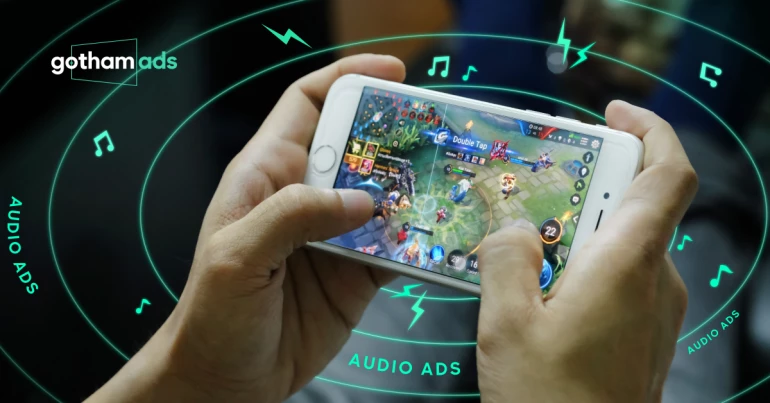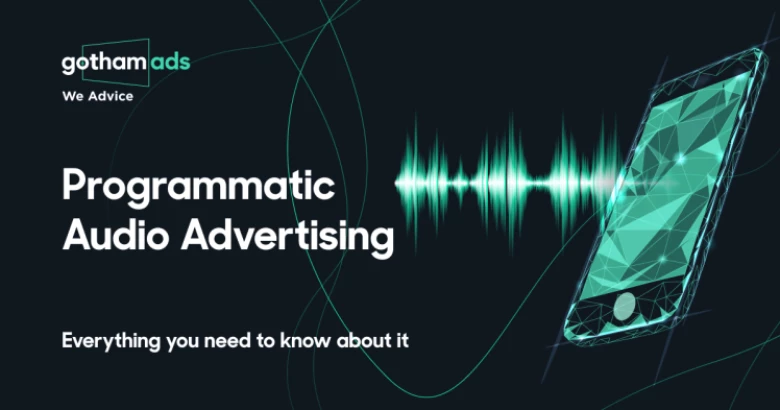In-Game Audio: Why Does It Work, And How Can It Be Used

In-game audio advertising, or dynamic in-game advertising, has recently gained prominence. We're used to in-game advertising in the form of static billboards or product placements within the game environment. However, in-game audio advertising refers explicitly to the insertion of audio-based advertisements within the game's audio stream. But why does it work, and how can it be used?
The emergence of in-game audio advertising
The exposure of in-game audio advertising can be attributed to the growth of online and connected gaming platforms, such as PC gaming, consoles, and mobile devices. As games became, more sophisticated and related to the internet, developers and advertisers began exploring new avenues to monetize games and reach a captive audience. In-game audio ads have become a bridge between brands and players, providing a seamless and non-intrusive way to reach audiences while they play.
One notable milestone in developing in-game audio advertising was the introduction of dynamic advertising platforms that could deliver targeted audio ads to players based on various criteria, such as geographic location, demographics, or player behaviour. These platforms enable advertisers to serve audio advertisements within games, leveraging the existing audio infrastructure of the gaming environment.

Advantages of in-game audio
Audio advertisements have proven highly effective for establishing deep emotional connections with audiences, as they connect ideas and messages with sounds and music. This connection between audio and messaging can leave a lasting impression and foster a strong bond between listeners and brands. In-game audio ads have a more significant potential to effectively reach audiences by evoking positive emotional responses in players. For instance, rewarded audio ads within games can generate a sense of gratification and uplift the player's mood, leading to enhanced emotional satisfaction and favourable brand perception.
One more advantage is the expansive and engaged user base. Mobile gaming has emerged as a prime space for in-game advertising due to its audience. In-game audio ads offer a non-intrusive means for brands to connect with their audience while enhancing the gaming experience.
Gamers are highly perceptive and profoundly impacted by visual and auditory stimuli on their screens. In-game audio ads seamlessly blend into the game, creating an organic and immersive gaming experience.
Integrating in-game audio ads should enhance the gaming experience and enrich the gameplay's overall immersion. As a result, the audience is more likely to pay attention and engage with those ads. It's not uncommon for these types of ads to see click-through rates above 1.5%.
How can you implement an in-game audio ad?
Brands can integrate their advertisements into the gaming experience in different ways. Here we have some examples of how in-game audio ads can be used:
In-game jingles can create brand recognition and leave a lasting impression on players. For instance, the "Intel Inside" jingle is used in some racing games as the player selects an Intel-sponsored vehicle.
Audio placement in sports games like FIFA or NBA 2K. For example, you might hear audio advertisements during breaks or timeouts. This is a story about the virus effect and long association. Audio ads in sports games can simulate the experience of hearing stadium announcements, sponsor messages, or even dynamic ads based on real-world events, adding authenticity to the game environment.
Everyone knows the Grand Theft Auto game. Using in-game radio stations that feature accurate music tracks, DJs, and commercials can significantly impact anyone who has ever encountered this game. These commercials may promote real-world brands, mimicking real radio advertising.

The main challenge for in-game audio advertising
One of the main challenges for in-game audio advertising is striking the right balance between monetization and player experience. Game developers and advertisers need to ensure that the inclusion of audio ads does not disrupt or detract from the gameplay experience. A recent YouGov study found that when in-game audio ads get executed with precision and care and don't disrupt gameplay, gamers don't mind them. While in-game audio ads can be effective, if they are too intrusive or frequent, they can irritate players and negatively impact their immersion in the game.
Another challenge is ensuring the audio ads are relevant and targeted to the specific audience. Advertisers must consider the players' demographics, preferences, and interests to deliver ads that resonate with them. Generic or irrelevant audio ads may feel out of place and fail to capture the attention or welfare of the players. Effective targeting and personalization are vital to maximizing the impact of in-game audio advertising.
Measuring the effectiveness of in-game audio ads and accurately attributing their impact on player behaviour or brand perception can be challenging.
By understanding the gaming audience and keeping ads short and engaging, advertisers can create memorable in-game audio advertisements that resonate with gamers. This is an exciting opportunity to connect with the audience on a whole new level.


